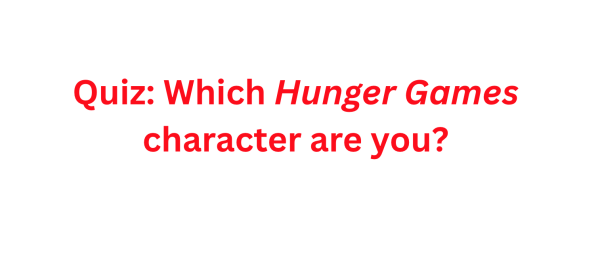Ableism in the media: Mishandling portrayals of disabilities
Sara Imbrie, junior, watches the pilot of Daredevil. Growing up, Imbrie had not seen many portrayals of characters with disabilities. “I think [Matt Murdock] is really cool,” she said. “He has tons of personality and is very interesting.”
Demolished and degraded in the aftermath of the Chitauri Invasion that occurred in the first Avengers movie, Hell’s Kitchen, New York devolved into a grimy, dimly lit cesspool of crime, where even the stained atmosphere reflects the desolate surroundings. Ruled over by thugs and crooks, the influence of gangs has reached an insidious point, invading every corner of life in the neighborhood. However, there is a cure: grappling with the Russian Mafiya, expunging the Yakuza and tearing apart human trafficking rings, blind vigilante Matt Murdock (Daredevil) has more than proved his mettle as the defender of Hell’s Kitchen.
Daredevil, an instant disabled icon since the conception of his character in April 1964, is currently the highest-profile disabled character in mainstream media. The first comic book adaptation that the Marvel Cinematic Universe (MCU) has aired featuring a disabled character, Netflix’s Daredevil has garnered widespread critical acclaim. Although its ratings are a murky area, since Netflix gauges a show’s success by the amount of subscribers it heralds–a figure that has not been revealed yet– Entertainment Weekly revealed that the show has been illegally downloaded 2.1 million times and that the show is receiving a second season not even a month after it first premiered, which reveals the show’s massive popularity and demand.
Other beloved disabled characters have graced both the large and small screens in recent times. Charles Xavier, a paraplegic telepath, headlined the wildly successful X-Men: Days of Future Past, which, according to Box Office Mojo, grossed more than $748 million internationally. In the same vein, Augustus Waters, an amputee afflicted with cancer, starred in The Fault in Our Stars film, which earned more than $307 million worldwide. Clearly, disabled characters prove to not only be popular in supporting roles, but they are wildly in-demand in lead roles as well.
So that leads to the obvious question: why doesn’t the media depict more disabled characters? It’s an obvious case of supply and demand. After all, according to the 2010 US Census, nearly 20 percent of all Americans are disabled, which provides television networks with a prime audience towards whom to gear their entertainment.
The answer is simple: our media is ableist, and it perpetuates harmful stereotypes and biases against the disabled in American society. As a whole, our media fails to represent the disabled properly, failing to provide millions of Americans with either quantity or quality.
The media largely fails in portraying realistic amounts of disabled characters on their programming. According to the 2010 US Census, nearly 20 percent of all Americans are disabled. Yet, Disability Scoop finds that “disability representation remains relatively small, accounting for just 1.4 percent of the 813 regular characters expected to appear on network prime-time programs.
Television networks would need to increase their disabled representation nearly twenty-fold in order to be even close to representing a realistic number of disabled Americans.
Showcasing the need for these numbers to increase, Mr. William Woessner, Homestead High School psychologist, claimed that representation for the disabled is important since “people from all walks of life deserve to be represented. And it’s important to represent [disabled people] since not everybody knows somebody who is disabled, so everyone has these myths or these preconceived ideas about these people, so it’s important for them to know that the disabled have their own feelings, goals and desires and that they’re normal.”
The media also features derogatory representation of the disabled, which promotes prejudices and misconceptions about the disabled. Showcasing the disabled as inspirationally disadvantaged to rouse their abled counterparts, depicting them as either angelic or satanic figures and showing them as either too helpless or too capable, the media proliferates harmful portrayals of the disabled that misrepresent them and their experience as a whole.
Displaying the disabled in an inspirationally disadvantaged light harbors insulting implications. Frances Ryan of The Guardian explains how this kind of depiction is hurtful, saying, “Disability, and the narrative of overcoming disability, [is used] as an emotional hook, to make non-disabled people feel like achieving more. These disabled people’s achievements are not enough on their own–their value really lies in what they can make everyone else feel like doing.”
Elaborating further on its effects, Ryan continued by saying that the main issues with narratives about people overcoming disabilities is that disabled people are not shown as complex human beings and are instead reduced solely to their disability, which is largely limiting. Putting how the disabled feel about this trope in words, Nick Sturley, a deaf man with Usher syndrome, said, “Don’t define me by a condition I happen to have.”
Another problematic portrayal of the disabled is the frequent characterization of the disabled as evil or demonic. Disability Studies explained, “Television often portray[s] disabled people as criminals or monsters.” Offering a contemporary example, Disabled Studies continued, “The director David Lynch used a disabled person, a ‘dwarf’, to exemplify evil in his popular soap ‘Twin Peaks’.”
Such depictions are not only degrading and inaccurate, they are also very dangerous. By planting the perception that the disabled community, especially those who experience emotional distress, is more likely to be violent and aggressive into the public, the more likely it is that they will receive less protection as a result of this imagined behavior. Consequently, this also leads to the fact the media overlooks abuses committed against the disabled, such as bullying and rape, since many people believe that aggressors are more likely to be disabled in some form, even though the disabled tend to be more introverted and sensitive than vitriolic in any form.
“What people need to realize is that those images affect the way society views and treats people with disabilities,” Ms. Susan Godfrey, physical education teacher, explained. “Thus, it is all the more important that disability is not treated as a casual prop or representation of adversity/evil. It is important to our next generation of young kids with disabilities that they have positive role models to look up to in media.”
Likewise, showing the disabled, particularly the developmentally and intellectually disabled, as angelic and incapable of committing immoral acts is crude and infantilizing. Susan Balieri and Arthur Shapiro, special education experts, claimed, “The eternal innocence of the disabled protagonists is a device used to reveal the flaws and foibles of their ‘normal’ adult peers, and often poses situations in which other characters can find redemption through their experiences with the protagonist.” This “white sheep” portrayal of a disabled character is executed in such a way that strips him or her of any and all agency, making every aspect of the disabled character in such a way that it advances the abled character’s storyline rather than his or her own.
This angelic portrayal is degrading as it infantilizes the disabled and downplays their ability to think for themselves. Balieri and Shapiro explained, “A major effect of the Holy Innocent stereotype is the juvenilization of adults with disabilities, [since] adults with intellectual disabilities experience the same emotions as non-disabled people, are capable of a broad range of behaviors, and possess individual and complex personalities.” As a result, “images that depict disabled persons as eternally innocent and childlike can lead to paternalism and a denial of adult rights” since many abled individuals might be led to believe that disabled adults would not be able to form their own adult decisions.
Yet another stereotypical portrayal of the disabled that has widespread influence over the media is depicting the disabled as overly capable. This form of ableism usually takes the form of enabling the disabled character through some fantastical means, usually supernatural, simply because for many abled individuals, the idea that a person to be fully disabled without some form of compensation is simply too ghastly to imagine. Powering the disabled takes on a variety of manners, such as giving blind characters enhanced senses and paraplegics supernatural or technological means of walking.
Speaking about this trope’s widespread nature in the media, Disabled Feminists claimed, “The number of times I see a person with a disability in pop culture with some form of super-power versus the number of times I’ve seen someone with a disability portrayed somewhat realistically is… Well, there isn’t really a lot of the latter, and there sure is a lot of the former.”
Mr. Woessner explained the need for the struggles of the disabled to be portrayed. “Television and the media should show the daily struggles that [disabilities] cause. Otherwise, nobody really thinks about it.”
The last, and perhaps the most insidious, portrayal of the disabled involves the disabled being depicted as helpless. A frequent usage of this characterization is meant to elicit pity from the non-disabled individual. Disability Studies claimed that two of the main reasons for this kind of depiction are meant to either make “the non-disabled public feel bountiful” or to “elicit great feelings of sentimentality in the abled individual–as opposed to genuine compassion.”
Kaitlin Geiger, junior, said, “I believe that [the media] portrays [disabled people] as helpless and unable to move forward with their lives, and, in some cases, it may cause harsh feelings towards them due to the feeling that they might get ‘special’ treatment, such as extra help with life in general.”
However, there are severely harmful consequences that arise as a result of this portrayal. Namely, according to Disabled Studies, it implies that “a disabled person’s well-being is dependent solely upon the benevolence of others” when, in reality, many disabled people are capable and lead highly independent lifestyles. Exemplifying the ability of the disabled to live independent lives, blind people, frequently stereotyped as some of the most helpless and vulnerable people on the planet, with proper training and assistive technology, can become sales associates, web programmers, state account managers, pediatric physical therapists and work many other careers.
Mr. Woessner explained how the disabled feel about this kind of characterization, saying, “The disabled don’t want to be pitied; they wish for respect and accommodations so that they can participate in everyday life.”
Thus, the media perpetuates and reinforces several ableist beliefs about the disabled, a long-stigmatized and misunderstood community. As a result, there are two jobs that we, as a society, must do: the media must aim to improve their representations of the disabled and we as consumers must dissect the messages that the media communicates in order to avoid falling prey to the same damaging mindsets infecting American society.

Madina Jenks is a senior and a new copy editor for Highlander Publications. As a copy editor, her jobs are pretty simple: write and help others write....

![Sara Imbrie, junior, watches the pilot of Daredevil. Growing up, Imbrie had not seen many portrayals of characters with disabilities. "I think [Matt Murdock] is really cool," she said. "He has tons of personality and is very interesting."](https://homesteadhighlanderonline.com/wp-content/uploads/2015/05/IMG_8825-900x675.jpg)






Madina Jenks • Sep 22, 2015 at 8:28 am
Thank you very much for your commentary, Joseph! I deeply appreciate your insight as a member of the disabled community, as well as the advice on how to improve this article so that it would be more inclusive. I apologize for my overlooking of the physically disabled. To rectify this mistake, I shall include the information you have provided on the appalling lack of coverage of important events for the disabled community into my article as soon as possible. Thank you very much!
Joseph Boehmer • Sep 19, 2015 at 4:24 pm
This is a very good article but I would like to ask one question. Where is the commentary on the physically disabled such as myself? The problem of ableism in the media is a problem for all of us in the physically dis-ABLED community as well as for the groups spoken of in this article. According to CDC surveys 15% of American adults reported a physical dis-ABILITY. Finally, this article fails to mention two major events that either were or will be massively overlooked, the 25th anniversary of the Americans with Disabilities Act and the fact that this summer is the first time that the media will be broadcasting the Paralympic Games in any kind of capacity near what the Olympic Games will get and the Paralympics will only be getting 66 hours, on NBC and NBCSN, of airtime compared to the untold hundreds on multiple channels that the normal games will receive over the time of the games.